- Fran Ross’s wildly funny race satire, Oreo, was originally published in 1974, and instantly forgotten. Mbali Sikakana surveys the novel’s relevance today.
I’m usually very slow to come around to things. It took me two years to ‘feel’ Wu Tang’s first album, even longer to appreciate Basquiat … but I couldn’t believe Fran Ross’s hilarious 1974 novel Oreo hadn’t been on my cultural radar.
—Paul Beatty, New York Times
Oreo
Fran Ross
Northeastern University Press, 1974/New Directions Publishing, 2015
The Sellout
Paul Beatty
Oneworld Publications, 2016
On the last day of August, on an evening already promising the bounties of spring, I bundled up two books from my bedside and rushed through the traffic to attend a book event on the other side of town.
It featured none other than Man Booker Prize-winning author Paul Beatty, right here in Johannesburg. The books I took with me were his novel The Sellout and a much lesser-known novel called Oreo by the black feminist writer Fran Ross.
Oreo was first published in 1974, during the height of the Black Power Movement, and despite its brilliance it was almost completely ignored. It resurfaced a few years ago as a cult hit, and my edition, quite mysteriously, is blurbed by Beatty. I was interested in the convergence or divergence, as he saw it, of their black American satirical perspectives, and his thoughts on this prescient, often overlooked and sole offering from a woman before her time, who left us too quickly at the age of fifty, dying of cancer in 1985.
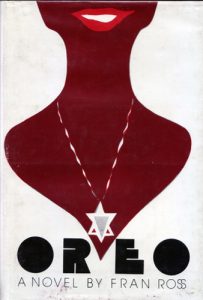
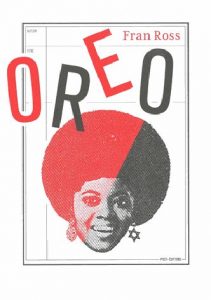
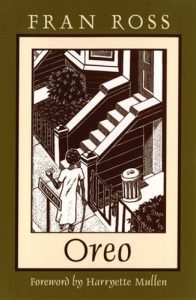
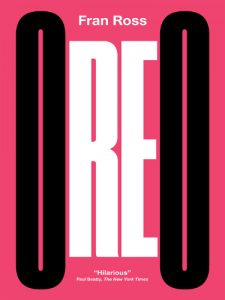
I was not disappointed. When I showed him the book, Beatty seemed astounded for an instant at the connection and moved that Ross’s work was being rediscovered around the world, having only come across it himself for the first time in his thirties.
There are many parallels between the two novels. Had Ross’s ghost slid a chair into the discussion Beatty had with moderator Victor Dlamini that night, an exchange as mischievous, prickly, lively and playfully combative as her protagonist, Oreo, might have ensued. A ‘sellout’ and an ‘oreo’ in intraracial African-American vernacular, for instance, denote an almost identical concept; they’re pejoratives used to shame the absence of absolute loyalty to one’s race, the standards for which are usually loaded with stereotypes.
Both writers problematise these concepts, expertly and hilariously, turning them on their heads. In discussing with Dlamini the many lenses he used to think through his book’s title, Beatty spoke wryly about the work of Dr William Cross, a leading theorist and researcher in the field of ethnic identity development—specifically black identity development—who presented his ideas under the rubric ‘Nigrescence’ in 1991. Not to be outdone, Ross’s ghost points out that her work has its own black identity chart, called ‘Colours of black people’, which appears in the first few pages of Oreo and features ten gradations of blackness in skin colour, from white to high yellow to yellow to light brown-skinned, all the way to black, at which point she clarifies that there is no ‘very black’ because only white people use this term and that, to blacks, black is black enough, unless of course it is your politics that is being referred to.
But this isn’t about Paul Beatty. This is about Oreo. The one by Fran Ross.
Barbara Smith, in her 1977 essay ‘Toward a Black Feminist Criticism’, observes that ‘for books to be real and remembered they have to be talked about’. Tellingly, the essay examines the work of Alice Walker, Margaret Walker, Toni Morrison and Zora Neale-Hurston—all of them famed. Ross is absent. Released on a small print run and hardly reviewed, Oreo failed to find its audience. It went out of print until the early 2000s, when it was rediscovered by the poet Harryette Mullen. Deborah E McDowell, in her essay ‘New Directions for Black Feminist Criticism’, critiques Smith’s essay for its ‘lack of precision and detail’ in identifying elements unique to black women’s fiction. One of these elements is the ‘motif of the journey’, which may touch on the social or political but which is ultimately personal and psychological, a theme can be applied neatly to Oreo. In the case of Ross and her heroine, Oreo, the journey is a rambunctious feminist caper, a retelling of the Greek myth of Theseus’s journey to the Labyrinth, which happens to be New York City, by way of Philadelphia.
The journey begins in the powerful loins of a multi-generational matriarchy. Louise, Oreo’s grandmother, and Helen, her mother, enjoy the unfettered freedom of the household after James, her grandfather, is rendered mute and stone solid, ‘a rigid half swastika’ in a ‘straight-backed chair’, upon hearing the unfortunate news of his daughter marrying a Jewish man. After her divorce, Helen and her two children move in with her parents. Louise, whose tongue is stubbornly Southern, is religiously attached to ‘playing the numbers’ and brings the wider world into their Philadelphia home through her love of cuisine: even bobotie—a recipe adapted by South Africa’s Cape Malay community—finds its place at the family table. Helen, amateur mathematician, mimic, singer and pianist, hits the road to help provide for Oreo and her brother Jimmie C while they live with her mother. Her letters become an education in her personal history, her hometown, American cities, capitalism, work, race, love, gender and patriarchy. In one letter, her childhood slang borders eerily close to internet nomenclature—except the L.O.L. used at Overbrook High School refers to ‘little old lady’. In another letter, she advances towards intersectionality in her humorous description of patriarchy’s many faces:
This is a subject I’ve given a lot of thought to, and I think I have the answer. I’ve tried to encompass in my theory all the sociological, mythological, religious, philosophical, muscular, economic, cultural, musical, physical, ethical, intellectual, metaphysical, anthropological, gynecological, historical, hormonal, environmental, judicial, legal, moral, ethnic, governmental, linguistic, psychological, schizophrenic, glottal, racial, poetic, dental [this was the logical link] artistic, military, and urinary considerations from prehistoric times to the present.
This exhaustive list leads her to the following ‘synthesised’ conclusion: ‘men can knock the shit out of women’. To the ‘so-called black matriarchs’ she says: ‘There’s no male chauvinist pork like a black male chauvinist pork’, already alluding to the black intraracial gender tensions that are so topical today. Helen points out that her mother still defers to her father despite his immobilisation, just in case, and after this revelation Oreo develops her own version of martial arts. Here the opposing intergenerational responses to power set the tone for the rest of the novel. Oreo is not better than her forebears, but she is allowed her own path. She is allowed to be ‘one pushy chick’.
Important to Oreo is its linguistic and cultural multiplicity. The books flits easily, in dialogue and narrative, from Standard American English to African American vernacular to Yiddish to French; from the short abrupt speech patterns and phrases of Louise to the made-up sing-song language of Oreo’s imaginative younger brother Jimmy C. In fact, the messianic Jimmy C comes across as an eccentric, child version of James Baldwin, whom Ross loved. The whole family creates, develops and interprets language organically and there is no clear boundary between what would be considered African American culture and the cultures outside of it, especially the Jewish culture with which they are inextricably intertwined.
Even Oreo’s passing over from her legal name Christine to Oreo is a neighbourhood effort, showcasing the natural development of shared language through verbal and visual associations, an unexpected twist in the novel’s established style. At one stage, Helen describes a town she has come across in her travels. In a descriptive style that, in comparison and hindsight, renders Dave Chappelle’s race satire reticent (and in fact, after Oreo was published Ross worked as a comedy writer for Richard Pryor), she flips white America’s anxieties about desegregation on its head and reveals its macabre underlying context:
The upper-middle-class blacks of Whitehall objected to the palefaces, not because they were poor (‘The poor we have with us always,’ said town spokesman, the Reverend Cotton Smith-Jones, rector of St John’s Episcopal Church), but because they were white (‘We just do not want whitey, with his honky ways, around us,’ said Reverend Smith-Jones to a chorus of genteel Episcopalian ‘Amens’). As Smith-Jones pointed out, whitey was beyond help. Chuck did not groove on crime in the streets, the way black people did; he did not dig getting his head whipped, his house robbed, his wife raped, the way black people did; he was not really into getting his jollies over his youngsters’ popping pills, tripping out, or shooting up, the way black people did. Such uptight, constipated people should not be allowed to mingle with decent, pleasure-loving black folk. That was the true story, but officially Whitehall had to be against the would-be intruders on the basis of poverty.
Such were the ways of ‘pleasure-loving’ black folk—a reference to American media’s representations of black communities as lawless and immoral, the architects of their own pain and annihilation.
Oreo’s quest to find her father and discover the ‘secrets of her birth’ begins with the following rousing benediction to parent-child relations: ‘I am going to find that motherfucker’, a surge of adrenaline at the challenge presented rather than a feeling of nostalgic loss. She pounds the street with the help of a walking stick commandeered from an unsuccessful pickpocket and used for, among other things, derailing street harassment. This is an early sighting of what Beyoncé, in the lyrics of ‘Lemonade’, calls her ‘hot sauce’: a baseball bat. Like a bat, the cane rests on Oreo’s shoulder ‘like a club’. Ross intrudes in the text to interject, should any critic interpret this as phallic and a ‘penis substitute’: ‘Wrong, Sibyl, it’s a long stick.’
Oreo knows how to use the hubris that a male-centred world bestows on even its presumably rational and scientific fellows. In a conversation with a doctor, where her plan is reliant on his co-operation, she mentions period pains, which the doctor responds are obviously in her head. She responds thusly:
She marvelled at his knowledge, saying that just went to show how smart doctors were, because she had lo these many years thought the cramps were in her uterus. She pleaded with him to humor her, and he condescended to allow her to come to his offices for a prescription.
Ross also satirises the development of rape prevention technology, a type of impenetrable ‘false hymen’ developed for pregnant mothers—darkly, the perpetrators are said to likely be their own husbands. Cyclically, in the present day, rape prevention devices make the rounds on the internet, not quite encroaching on this more deadpan, horrifying logic. What is made clear is that the sale of such devices entrenches the legitimacy of the act while allowing capitalism another sinister inlet for profits. This critique is not just reserved for gender: capitalism is also examined for appropriating so-called black liberation. Oreo notices ‘a black queen’ on the train wearing Gucci sandals: ‘red for the blood of black people, black for their race and green for the money Gucci was making from this style’.
Some of the most cinematic moments in the book are Oreo’s encounters with a pimp she names Parnell. Having observed his treatment of his employees—a bizarre, objectifying, unnecessarily intricate and coquettish display of his male sexual power and dominance—Oreo sets out to teach him a lesson. His comical fall from grace is public and humiliating. Ross delivers this nail-biting prose in describing Parnell’s ‘sodden rise from the gutter’:
His arms extended like wings away from his soiled and dripping suit, his fingers spoked out from his palms at a web-splitting stretch.
Moreover, what satisfies Oreo is the ‘look of revelation’ on the faces of his cohort of sex workers. For the first time, they have discovered that their overseer is vulnerable.
The book’s subversive banter is balanced exceedingly well with simply exquisite prose, for example in the scene where Oreo finds herself in a sauna:
Her eyeballs were hot globes of tapioca. She breathed in flues of fire without flame, exhaled dragon blasts, stirring up sultry harmattans in her private sudatorium. The wax in her ears was turning to honey.
With the introduction of the mammy figure Hap, the first standalone view of the stereotype of black American life and history is presented, and, after the stereotype- and sacred cow-slaying that has gone before, the contrast is striking. Ross is able to build sympathy for the character and showcase the redeeming qualities of this model of black womanhood, suggesting that in their ability to quietly subvert and observe and report, ordinary women were able to build up a certain intelligence from not being seen, which, perhaps, forms a kind of bedrock on which to build. Hap is not completely free from critique, but in Oreo, Ross pokes fun at the preposterous perceptions that precede her and subverts the caricature, rendering the character believable while also preserving her dignity. In describing the behaviour of her adopted siblings around Hap, for example, Oreo observes:
Hap tried to shoo the children towards Oreo, but they bobbed around that rich broth of a woman like dumplings.
Bertram Ashe, in his analysis of what has been termed the post-soul aesthetic, places Oreo within a trajectory that includes Toni Morrison’s Tar Baby, Ralph Ellison’s Invisible Man and Jean Toomer’s Cane, among others. In other words, Oreo belongs within a rich tradition of elegant, intellectually astute, darkly comedic, resistant and some might even venture vulgar African American literature. It is also a novel that grapples with black feminism before Alice Walker’s seminal The Colour Purple did. Today, it remains timely and on time.
- Mbali Sikakana is a Chartered Accountant currently studying a Masters in Publishing Studies at Wits University. Follow her on Twitter.

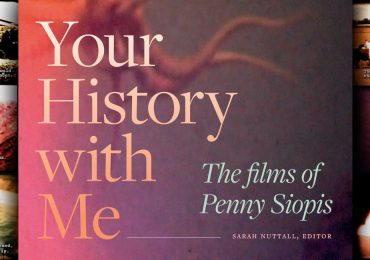
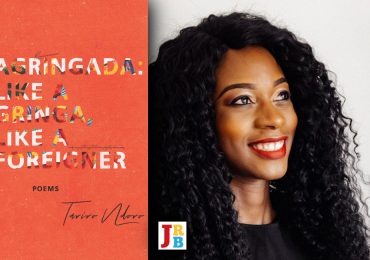
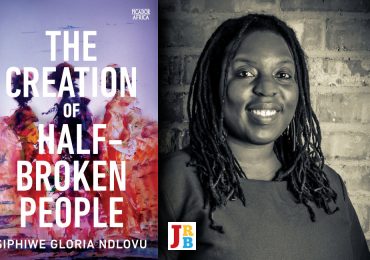
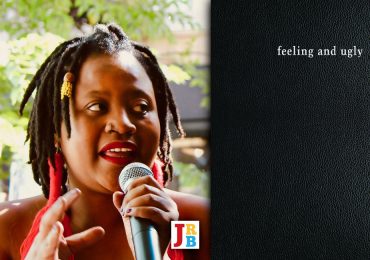
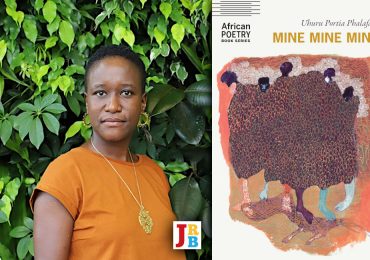
ah i would love to read oreo. i wonder if the library has it? i didn’t like the Sellout. thanks for your lovely writing.
thanks for reading!